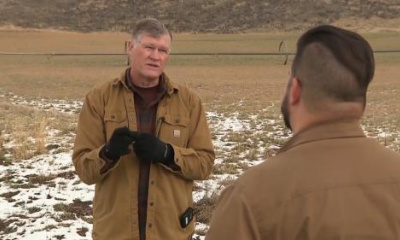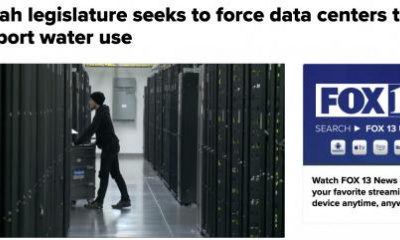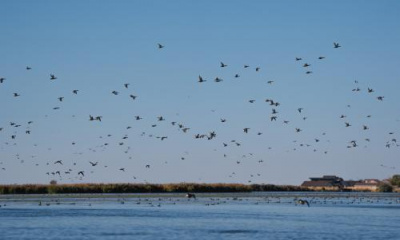Panel votes to exempt small water districts of 2,500 or less from metering
A committee of lawmakers voted Tuesday to potentially broaden the exemptions for those water providers subject to the metering of secondary water, bumping it up from 1,000 connections and now proposing those districts with 2,500 connections or less be included.
Sponsored by Sen. David Hinkins, R-Orangeville, SB125 aims to alleviate the burden on some of these smaller districts, some of which may not even be part of the Great Salt Lake drainage.
Hinkins said a pair of districts contacted him about the potential change. They have more than 1,000 connections and one expects to grow to 2,500 connections in the future.
Sen. Scott Sandall, R-Tremonton, wondered if some of the controversy could be excised from the bill if the systems themselves were outside the Great Salt Lake drainage altogether.
Hinkins agreed, but pointed out that the larger systems along the Wasatch Front would benefit from the metering funding more than small systems that might have a negligible effect.
“That money that was appropriated, the $250 million. I believe some of the bigger water districts would like to utilize that money where the smaller ones aren’t really going to ... (and won’t) impact at all at the Great Salt Lake.”
Sandall said the state needs to be flexible, but firm on its commitment to saving water for the benefit of the state’s water resources.
He added the exemptions granted in the past were appropriate — and while it may be worthwhile to revisit the 1,000 connection threshold — caution should be exercised when it comes to growth.
Being exempt, however, does not mean having no interest in metering of secondary water, one official said.
Joel Williams, deputy director of the Utah Division of Water Resources, said the $250 million awarded in the last round of funding has been authorized by the board for applicants via the grant process.
“We currently have about 13 applicants that are in that range between 1,000 and 2,500 (connections). We don’t know which of those would decide they would rather not meet those requirements,” he said, adding nine of those are in the Great Salt Lake drainage area.
Zach Frankel, executive director of the Utah Rivers Council, said it would be ideal to know how much water intended for the Great Salt Lake has been liberated, so to say, via secondary water metering.
That information, however, is not yet available.
“Studies have shown metering projects have shown that water use declines anywhere from 20% to 50%. And in the Great Salt Lake Basin, of course, I know I don’t need to tell you that Utahns want to make sure the Great Salt Lake exists. So we certainly don’t want to make anything hard for farmers and agricultural producers of any kind. We certainly would love to see the state put more funding into secondary metering,” said Frankel.
Frankel added he is anxious to continue to work with the sponsor and others on the bill.
“You can’t manage what you don’t measure. If you don’t know how much we use, we do not know how to manage it.”







